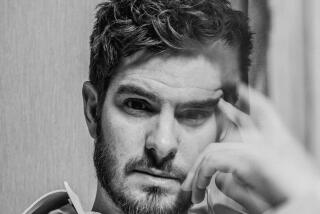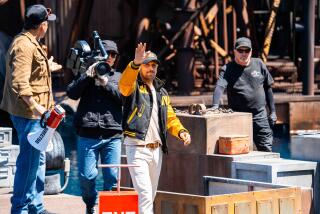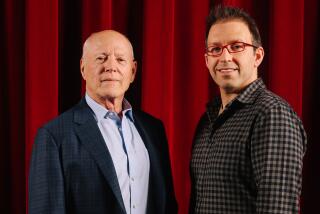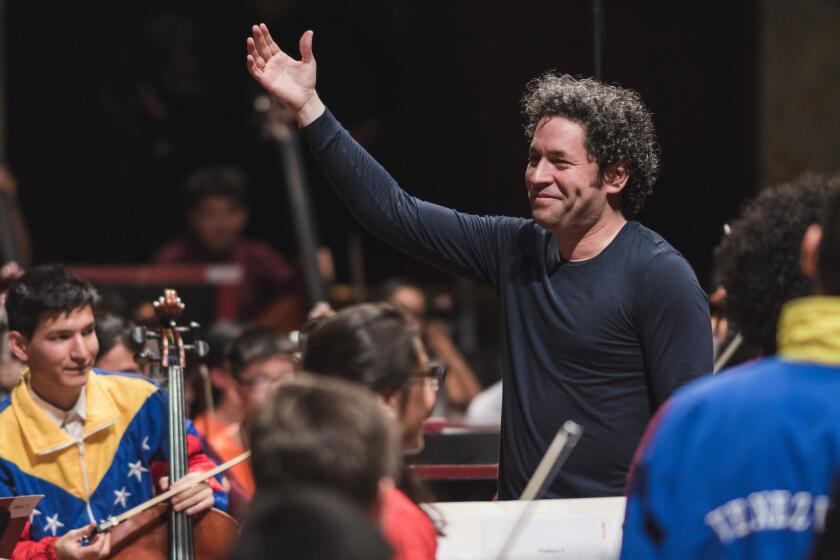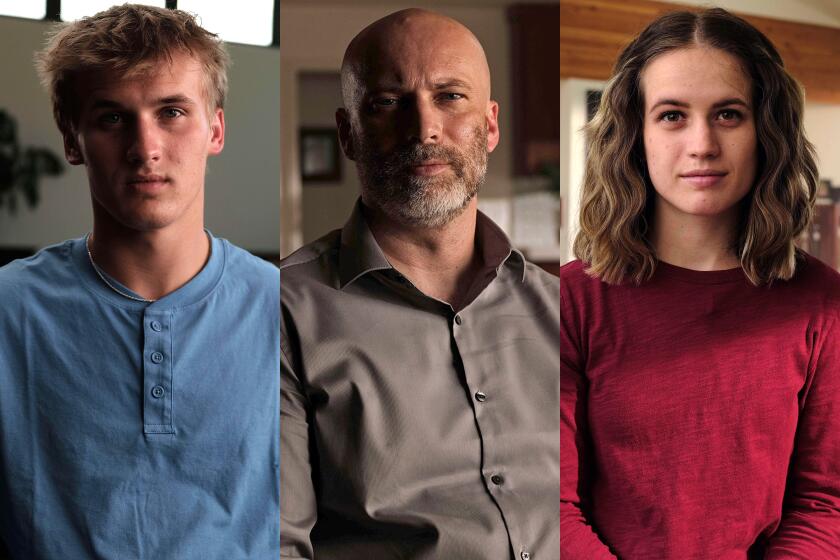David Copperfield Dispels a Few Illusions About Magic
- Share via
After you have levitated across the Grand Canyon and made the Statue of Liberty disappear, what do you do for an encore?
If you are David Copperfield, you hit the road with a really swell piece of equipment called the “Death Saw,” and you have yourself sliced in half in a different town virtually every night of the week across the country.
And then, in case anybody thinks it is a trick, you have the two halves of your not-so-dead body wheeled around the stage on separate tables. Sometimes you do this three times on Saturdays and ditto on Sundays.
“We’ve got it down to a science,” said Copperfield, who averages 500 shows a year and brings his high-tech act to the Orange County Performing Arts Center tonight for the first of seven performances over the weekend.
There are worse ways to make a living. Speaking last week from a pay phone at a theater in Baton Rouge, La., where he was rehearsing for a one-nighter, Copperfield said he grossed $35 million two years ago.
But the 31-year-old entertainer--born David Kotkin in Metuchen, N.J.--maintained that he is so enamored of performing he would do it “even if it were not lucrative financially.” He takes pride, moreover, in modernizing the art of magic and lending it a stylish aura of romance and mystery.
“Unfortunately, most magic has stayed in the vaudeville era,” he said. “I wanted to bring it into the ‘80s. I incorporate theatrics to touch the audience. A large illusion, like the vanishing of the Statue of Liberty, is just plain astonishing. It removes all sense of disbelief. But I do other things that tap the imagination.”
In other words, Copperfield can think small. He said he likes to narrate stories and resolve their plots with magic. He may act out a romantic vignette of unrequited love with a woman who vanishes or he may simply tell a joke that has a sleight-of-hand punch line.
Still, after you have escaped from Alcatraz and walked through the Great Wall of China, your audiences come to expect illusions on a grand scale. And Copperfield, who conceded that he wouldn’t be as rich or famous without the big stuff, is a wonderfully obliging performer.
“Over the past two years, audiences seem to request the ‘Death Saw’ more than anything else,” he said. “We do that piece for the sake of the suspense. We actually present it as an escape. Everybody thinks I’ll get out of the bolts before the blade cuts through me. When I don’t, the audience is left in shock.”
Strangely, Copperfield hasn’t looked to the great magicians of the past for inspiration. “I was never a Houdini fan,” he said, adding that he took up magic as a child simply to get attention.
In fact, he tried ventriloquism first. “I was really taken with Paul Winchell,” he recalled. “But I wasn’t any good. I did better with magic.”
By 12, Copperfield was being paid to perform at parties. By 16, he was teaching a magic course at New York University. But all the time he wanted to be a star in the musical theater. His idols, he said, were Fred Astaire and Gene Kelly.
Infatuated with show business, Copperfield not only studied singing and dancing for years as a teen-ager, but he regularly hopped a bus for the hour-and-a-half ride to Manhattan from his home in the New Jersey suburbs so he could sneak into Broadway shows.
“I’d get in during the intermission and stay for the second act,” he said. “I was such a big ‘Pippin’ fan that I got to hang out with (its star) Ben Vereen.”
Copperfield was 18 and a freshman at Fordham University when he auditioned for the title role in a show called “The Magic Man.” Three weeks into his first semester, the producers called to tell him he had the job. The show went to Chicago, Copperfield with it.
Though no more than a routine dancer, he could do the tricks required of him with considerable flair. That proved sufficient. “The Magic Man” ran for a year. Even so, Copperfield realized that he would have to put aside his dream of musical-theater stardom.
“At one time I thought I could sing,” he said. “But I’m convinced that’s one thing you can’t be taught. You either have it or you don’t. I didn’t.”
Copperfield, stripped of illusions, decided to concentrate solely on the art of illusion.
“Astaire and Kelly did in dance what I wanted to do in magic,” he said. “They took dance to another place. They made it more than steps. I want to make magic more than tricks.”
Today, the darkly handsome magician tours like a rock ‘n’ roll star, with 22 technicians and more than 15 tons of equipment hauled in two 48-foot tractor trailers.
He spares no expense to “get it right,” he said. “I paid a million bucks out of my own pocket” for cost overruns during his recent CBS television special in the Bermuda Triangle, he said.
CBS would not confirm or deny this. “We have a policy of not divulging production costs,” said CBS spokeswoman Rena Terracuso.
After five years of steady touring, it should come as no surprise that Copperfield has won a large following. He said his fan club numbers in the tens of thousands. His father, who owns a clothing store in Metuchen, “runs the fan club from the store,” he said. “He has people logged into his computer from all over the world.”
But some fans prefer more personal contact. They try to keep in touch with Copperfield by following him around the country on his tours.
“Magic groupies do exist,” he said. “There are some very beautiful women traveling around out there. They’ll show up in Washington, then in Detroit, then in San Diego. Exactly the same people. You wonder how they’re financing this little mission of theirs.”
Could it be on dreams of magical romance?
After all, Copperfield, who owns two homes--one in Hollywood Hills and the other in Las Vegas--is a rich bachelor. As the man said: “I’m single and looking.”
In case you wondered, his stage name has nothing to do with the novel by Charles Dickens. A friend “suggested the name out of the blue,” Copperfield recalled. “We didn’t think Kotkin would look good on a marquee.”
David Copperfield will be at the Orange County Performing Arts Center today at 8 p.m., Saturday at 1, 4 and 8 p.m. and Sunday at 1, 4 and 7 p.m. Tickets: $15 to $24. Information: (714) 556-2787.
More to Read
The biggest entertainment stories
Get our big stories about Hollywood, film, television, music, arts, culture and more right in your inbox as soon as they publish.
You may occasionally receive promotional content from the Los Angeles Times.
